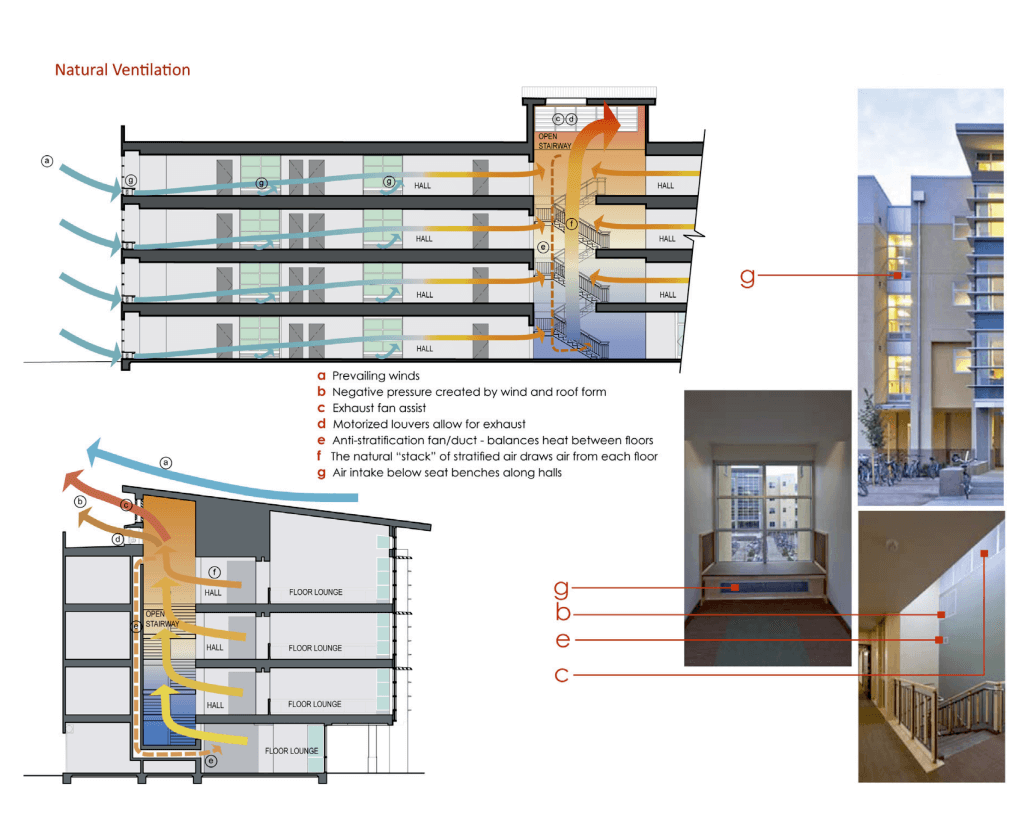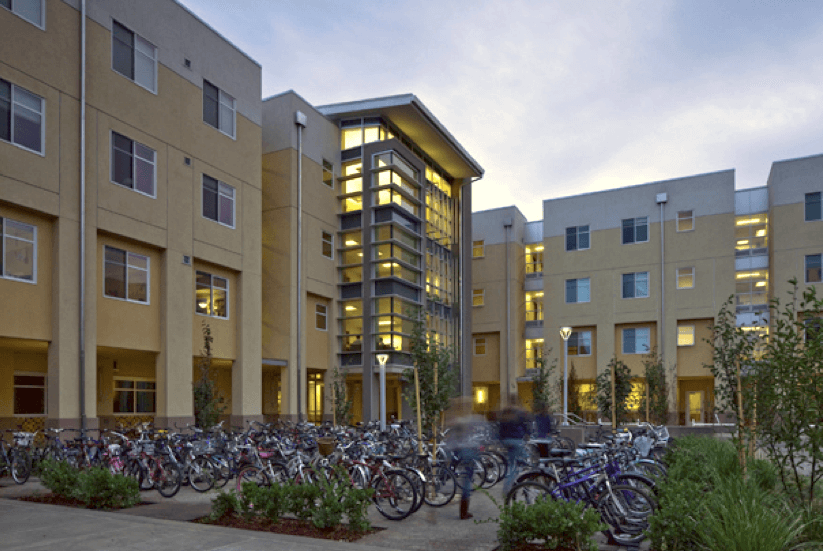Historically almost all buildings were naturally ventilated. In hot climates of the Middle East 2000 year old structures utilize solar chimneys. Natural ventilation uses natural forces to promote air movement. Using the differential pressures of wind and air density, a building can deliver fresh air without the use of fan-forced energy.
Wind pressure is positive on the windward side of a building and negative on the opposite, leeward side. Proper orientation of a building to prevailing summer winds promote air movement through the natural propensity toward equalization of these differential pressures.
The buoyant hot air comes to the ceiling, providing a natural flow to upper exhaust openings and thereby pulling cool air from lower openings.
Natural ventilation is further enhanced by differing air density caused by divergent temperature. The buoyant hot air comes to the ceiling, providing a natural flow to upper exhaust openings and thereby pulling cool air from lower openings. The stack of rising hot air allows for a natural exhausting of unwanted hot air and the delivery of cool air through lower window and louvers. This is particularly well suited for nighttime purge and early morning pre-cool cycles in warmer climates.
When a purely natural ventilation system may not be adequate, a fan-assisted cooling strategy to encourage the natural flow can provide up to 9°F effective temperature drop at one tenth the electrical energy consumption of mechanical air-conditioning systems.
The UC Davis Tercero Student Housing project incorporates these natural ventilation strategies to provide fresh air and cooling, avoiding the higher energy consumption of mechanical systems. Taking full advantage of the cool evening breeze provides for nighttime and morning cooling. Automated controls provide natural cooling for public spaces and allows for occupant controlled ventilation within individual bedrooms.
A “thermal chimney” promotes natural ventilation through the stratification of the air. The Central Stair is a continuous four story volume open to each floor. The hot air rises to the operable louvers that exhaust the extra heat at the top of the stairs. Cool exterior air is introduced through motorized louvers located at multiple window seats throughout the hallway on every floor. The system is controlled through the building’s energy management system which monitors interior and exterior temperatures, triggering louvers and large fans to assist in what is essentially a building-wide natural ventilation economizer cycle.
With a magnetic hold-open the students’ bedroom doors can be left open allowing the room’s air to be inhaled from an open window and exhaled through the hall and out the stair tower. When the exterior/interior temperature differential is optimal, a green light in the lobby signifies that the windows should be opened for natural cooling. A red light tells students to keep the windows shut.
The geometry of the natural ventilation scheme coincides with the creation of community spaces at window seats, resulting in an elegant system using passive and active elements allowing the building to breathe. The project has realized twice the energy savings that was anticipated in the 32% below Title 24 energy compliance.



Article is very informative.
Thanks to the author for sharing such a great post. The article was very well written and providing great info about natural ventilation strategies case study uc davis tercero student housing phase two. It can be really great for people like me who are looking for grabbing more knowledge about it. They offer same information here https://roofquip.co.nz/ one must check them also.